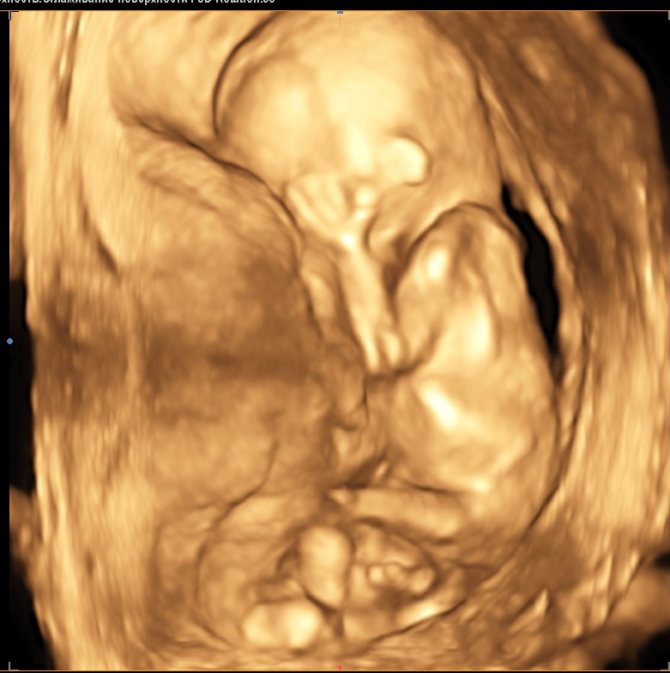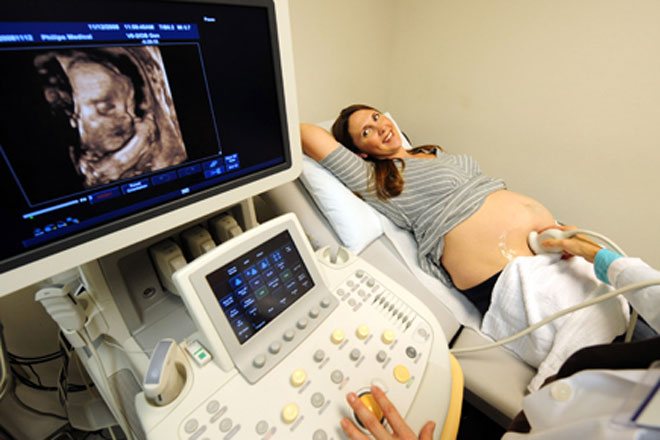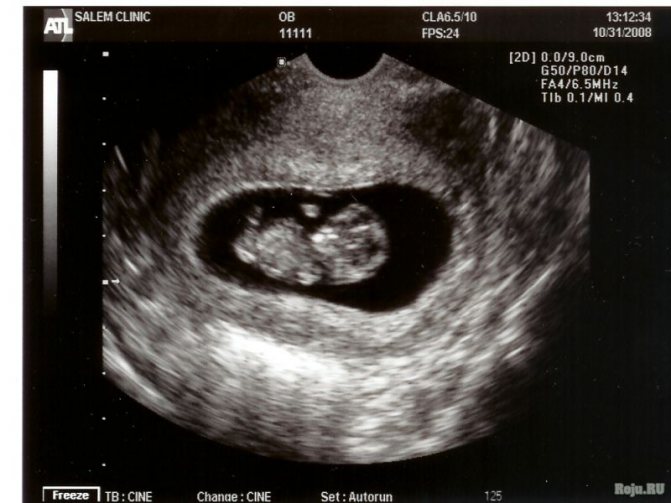Boy or girl? This question is asked by all future parents, and for some of them it is key. Although it is impossible to influence the gender of the unborn child after conception, every expectant mother wants to be better prepared for the birth of her newborn. It is now customary, even during pregnancy, to buy blue or pink things for the unborn child, and to select the interior of the nursery to suit the needs of the boy or girl.
Today, thanks to family planning methods, you can even choose the gender of your child before conception! But how can you find out the sex of your baby before he is born? Not long ago, this became possible thanks to medical research. Today, ultrasound is an effective, safe and accessible method for assessing fetal development during pregnancy . And gender determination has also become possible thanks to the spread of ultrasound diagnostics.
Popular beliefs
Is it possible to determine and plan the gender of the unborn child using tables and signs? Even today, there are many misconceptions floating around in books and on the Internet regarding the gender of the child in the womb. Many mothers believe in gender prediction by “blood renewal” and try to guess the baby’s gender using tables and horoscopes.
Need I say that modern medicine is skeptical about such beliefs? To be precise, the reliability of these “methods” for determining gender is about 50%. That is, either the forecast will be accurate or it will be wrong. It turns out that any coincidence between such forecasts and reality is accidental.
By the way, only invasive methods for diagnosing the sex of the fetus, such as chorionic villus biopsy, amniocentesis, etc., are considered absolutely reliable. Even a biochemical analysis of the mother's blood cannot completely exclude an error.
Medical indicators of pregnancy and gender of the child
There are also purely medical methods and methods for determining the sex of the unborn baby: blood pressure, swelling, heart rate, time of conception.
You can find out the gender of the child by:
- blood pressure (low for a girl, high for a boy);
- heart rate (the higher the number of heart beats per minute, the higher the likelihood of having a boy);
- time of conception (conception before ovulation - for a little princess, and after - for a boy).

What does science say about sex planning?
As for official data, today medicine affirms two truths. First, the sex of the child is determined by the sex chromosome contained in the male sperm. Thus, expectant fathers should not blame women for having a child of the “wrong” sex than they want.
And, secondly, there are favorable days of the menstrual cycle for conceiving boys and girls. The fact is that sperm carrying the female X chromosome are more tenacious, but have a slower movement speed towards the egg. On the contrary, sperm with the Y chromosome (with which you can conceive a boy), move faster towards the goal and do not live long. That is, if a couple wants to conceive a boy, they should do this after ovulation. And if the couple’s goal is a girl, sexual intercourse should occur before ovulation. Sperm carrying the male y chromosome will be inactive by the time the egg leaves the ovary and enters the fallopian tube.
Using modern and affordable ovulation tests, future parents have the opportunity to “choose” the sex of their unborn child. But, unfortunately, this method does not guarantee the appearance of a baby of a strictly defined gender. You can accurately plan for a boy or girl only by using in vitro fertilization (IVF).

Today, thanks to family planning methods, you can even choose the gender of your child before conception! But how can you find out the sex of your baby before he is born? Not long ago this became possible thanks to medical
When is the sex of a child determined in the womb?
The birth of a child is a miracle that every woman on the planet who has become a mother is familiar with. Any of them is waiting for this miracle and hopes that her baby will be the happiest, wisest, and most successful when he grows up. And all expectant mothers think about who they are carrying: a boy or a girl.
"Chicken or the egg"?
According to an ancient beautiful legend about love, androgynous people lived on Earth, and they were a perfect race, combining both male and female traits. Heavenly forces divided androgynes into men and women.
For what, is no longer so significant, but the fact remains: to this day, the halves of androgynes are looking for each other. And a man and a woman who have found their soul mate in each other become that very ideal couple, a single whole.
But humanity is doomed for centuries to have offspring that are divided into men and women, born as boys and girls.
At what date is it possible to determine the gender of a child using ultrasound?
In our country, all pregnant women, regardless of the presence of pathology, are prescribed three mandatory ultrasound examinations. These are so-called perinatal screenings. The first of them, carried out from 10 to 14 weeks of pregnancy, is not the best time to determine the sex of the unborn child using ultrasound. At this time, the embryo is still too small, and the genitals are not visualized very well. But still, such a period can be shown by an ultrasound to an experienced specialist.
In the early stages of pregnancy, it is recommended to determine the sex of the child in the womb using a laboratory test - a biochemical blood test. But although this method is highly reliable, it is quite expensive and not available to everyone. As a rule, such a study is prescribed not out of idle interest, but when there is a threat of hereditary diseases linked to sex. If one of the parents is susceptible to this condition, the test can be ordered free of charge.
When is the sex of the child determined by ultrasound? An experienced specialist with good equipment will be able to answer the question that concerns parents after the fourteenth week of pregnancy. But the most accurate prognosis will become known already at the second screening ultrasound, at 20-24 weeks of pregnancy. At this time, the reliability of gender determination by ultrasound approaches 100%.
Three-dimensional diagnostics

three-dimensional reconstruction using ultrasound examination
With the help of modern medicine, it is possible to conduct accurate and safe studies of the development of the unborn baby. One of them is ultrasound in 3D reconstruction.
Why do this type of research? The purpose of the exercise includes several important parameters:
- Diagnosis of genetic diseases such as Down syndrome in the early stages.
- Confirmation of developmental abnormalities in the embryo.
- Heart examinations of the unborn child.
- Observations on the formation of each and every individual during multiple pregnancy.
This procedure is absolutely painless and safe for both mother and baby. It lasts about an hour and does not require special preparation. Thanks to this method, you can clearly see the child’s facial features, his facial expressions, and examine the baby’s organs in the womb.
How does a doctor determine the sex of a baby during an ultrasound examination?
Even in the early stages of pregnancy, from approximately 12-14 weeks, the so-called genital tubercle is noticeable in the embryo - this is the rudiment of the future genital organs. An experienced doctor with good equipment will be able to predict the sex of the baby already at this stage. To do this, the relationship between the tubercle and the back of the child is assessed. If the angle drawn through these parts is more than 30 degrees, then the specialist assumes a male fetus. If less than 30, you will most likely have a girl. But at this time, the accuracy of the forecast is far from ideal: no more than half of the “prophecies” come true.

From about the 20th week of intrauterine development, when the sex of the child can be determined more accurately by ultrasound, most couples ask the doctor a secret question. At this stage, the doctor evaluates the appearance of the genital organs of the unborn child, and not mathematical relationships. But you shouldn’t delay determining sex: a grown fetus easily hides its sexual characteristics, because he feels cramped in the uterus.
It is noteworthy that if a specialist promised you a girl, this will most likely turn out to be a mistake . The fact is that the descent of the testicles into the scrotum in all children occurs at different stages of intrauterine life, and sometimes even after childbirth. Therefore, the likelihood that the sex of the child will not be clearly determined on the screen of an ultrasound diagnostic device is higher.
How is the gender of the unborn child determined?
The sex of the unborn child is determined from the moment of conception, when the sperm fuses with the oocyte. The seminal fluid contains two types of sperm with different chromosome sets. Some of them have an X chromosome, which is responsible for the formation of a female individual, the rest contain a Y chromosome, thanks to which a male body is formed. The ratio of sperm carrying one of the two chromosomes is 50/50.
The zygote resulting from the fusion receives an X or Y chromosome, but remains undifferentiated until the 6th week of the gestational period. The first signs of gonads appear already at 3-4 weeks, but at this time they are exactly the same in girls and boys.
After week 7, under the influence of genes located on the X or Y chromosome, the first differences appear in the rudimentary genital organs of the embryo. The internal genital organs begin their differentiation first, at approximately 10-12 weeks of gestation. During this period, in future boys, cells are formed in the rudiments of the testicles that begin to synthesize male sex hormones, thanks to which further development proceeds according to the male type. In girls, hormone synthesis also occurs in the ovarian buds, but compared to the fetal testicles of boys, their hormonal activity is much lower.
The external genitalia differentiate during the period from 12 to 20 weeks of intrauterine life. At first they are the same for boys and girls and contain the following elements:
- genital tubercle;
- labioscrotal ridges;
- urogenital sinus.

A photo of an embryo at 10 weeks shows undifferentiated genital rudiments. Different hormonal levels in embryos lead to the transformation of these structures into male and female genital organs. In boys, by 18-20 weeks the penis and scrotum are formed. The testicles at this time are located inside the abdominal cavity and descend into the scrotum at 8-9 months of gestation.
Girls develop labia majora at 17 weeks, and labia minora at 23 weeks. At 21-22 weeks the vagina forms, and at 24-25 weeks the hymen appears.
Reasons for errors in determining gender
Although today doctors prefer not to reassure future parents ahead of time, and, as a rule, they report the sex of the child inaccurately, there is a possibility of error. The most common reasons for such a “surprise” are listed below.
- Determining the sex of the fetus too early. As mentioned above, sex determination can be considered reliable after 20 completed weeks of pregnancy. But even at later stages, an error is possible in the following cases.
- The baby's position prevents the visualization of his sexual characteristics. As a rule, the doctor suggests that the pregnant woman change her position or move a little so that the baby settles down as needed. Often a woman is offered to drink sweet tea or eat a product rich in glucose so that the fetus in the uterus begins to actively move. But some babies have persistence even before they are born!
- Late pregnancy may prevent reliable determination of the baby's gender.
- If there are several fetuses in the uterine cavity, the doctor may not consider their gender. For example, if the children are located nearby and cover each other.
- It is also possible that the specialist has low competence, poor image quality on the monitor and other technical issues. However, at present, all of the above is quite rare. Today, determining the sex of a child in the womb is a simple procedure for any ultrasound specialist.
Despite all these factors, the accuracy of the ultrasound method for determining sex starting from the 21st week of pregnancy is now approaching 100%.
On what factors does the accuracy of the research results depend?
Determining the sex of the fetus using ultrasound is an informative and safe method, but is not 100% accurate. Factors influencing the result:
- gestational age;
- position of the fetus inside the uterus;
- volume of amniotic fluid;
- abdominal wall thickness;
- resolution of ultrasound equipment;
- doctor's experience and qualifications.












